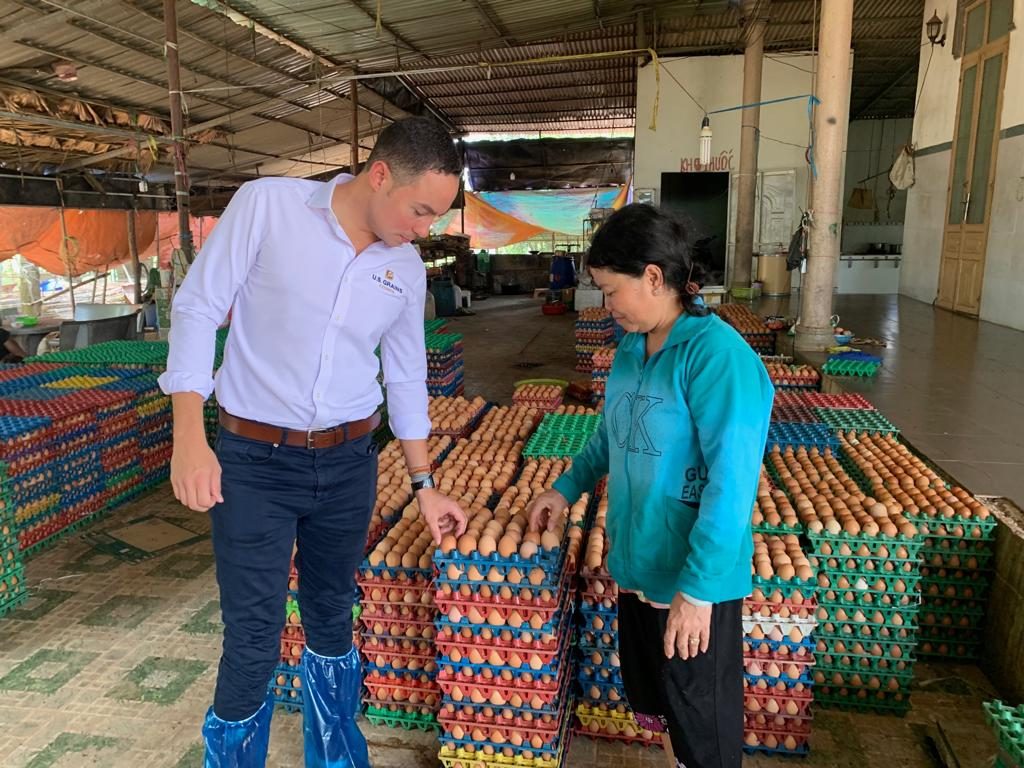There are no rearview mirrors on the motorbikes in Ho Chi Minh City, as the saying goes, implying the Vietnamese people never look backward, but stay focused on the future.
That can-do, progressive attitude has established Vietnam as one of the fastest growing feed markets in the world with attendant increases in demand for meat, milk and eggs from a middle class growing in number and influence.
An on-the-ground presence is extremely important in Vietnam, where government policies and market situations can change quickly. Caleb Wurth, U.S. Grains Council (USGC) assistant director for Southeast Asia, recently spent three weeks traveling throughout the country to assess the impact of African Swine Fever (ASF) virus on local swine production and overall feed demand for corn and dried distiller’s grains with solubles (DDGS) as well as inform the Council’s overall strategic approach.
Wurth discovered Vietnamese producers are wasting no time in retooling their operations as the virus has affected a large portion of their swine herds. He observed farmers culling herd and clearing barns to make them ready for layers, broilers or ducks in the same space the next week. Farmers are also expanding into aquaculture – in both freshwater ponds in the delta region and offshore in cages along the coast.
“The extensive losses in swine production are being partially offset by increases in poultry and off-shore cage aquaculture,” Wurth said. “In response, the Council has begun working with local feed mills and DDGS importers to assist farms devastated by ASF to switch to poultry, layer or duck farming rather than give up meat production altogether.”
If an effective vaccine is discovered, however, the Council expects to see farmers revert to a similar pre-ASF protein mix, reinforcing the need to maintain both long-term efforts – like working to increase DDGS inclusion rates – and frontier market work – including hiring a full-time aquaculture specialist for the region through funding from the U.S. Department of Agriculture’s Agricultural Trade Promotion (USDA’s ATP) program. Both pieces are necessary to successfully pivot alongside animal industries in Vietnam and throughout Southeast Asia.
“Vietnam is just one of the markets in Southeast Asia with tremendous potential,” Wurth said. “As programming pivots to address shifting market demands, the Council will continue to leverage the success of its programs, people and partnerships to cultivate significant sales of U.S. feed grains, ethanol and co-products.”
In less than a decade, Vietnam has grown from a top 10 to a top three corn importer in the world. The country is a significant importer of both U.S. corn and DDGS with additional future potential for U.S. sorghum. That same rising middle class is also creating additional demand for ethanol, aided by a nationwide E5 blend mandate expected to grow to E10.
These factors combine to make Vietnam a focus of the Council’s work to capture increasing demand for feed grains and ethanol export volumes for U.S. farmers and agribusinesses in Southeast Asia.
About The U.S. Grains Council
The U.S. Grains Council develops export markets for U.S. barley, corn, sorghum and related products including distiller’s dried grains with solubles (DDGS) and ethanol. With full-time presence in 28 locations, the Council operates programs in more than 50 countries and the European Union. The Council believes exports are vital to global economic development and to U.S. agriculture’s profitability. Detailed information about the Council and its programs is online at www.grains.org.


